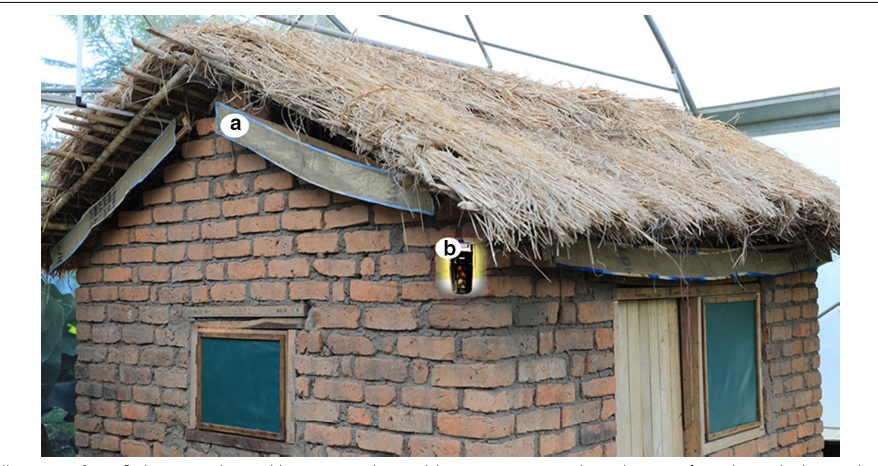
Principal Investigator: Fredros Okumu
Project leader/ Coordinator: Ruth Shirima
Project Administrator: Rukiyah Mohammed
Funding Partner: Bayer AG, Germany
Start date: Oct. 1, 2020
End date: March 31, 2021

Assessment of mosquito biting reduction and mortality rates caused by eave-ribbons treated with different formulations of transfluthrin inside the semi-field system.
The use of Insecticide-treated bed nets (ITNs) and Indoor Residual Spraying (IRS) contributed much to the reduction of Malaria burden. The remaining residual transmission is due to change in vector behaviors that enable them to escape these main interventions, example feeding outdoor in early evening.
Due to the gap of using the existing interventions which seems to leave unprotected people, once they are not compliance with existing interventions, the study will test Eave ribbon treated with transfluthrin that can offer personal protection as well as communal level protection which will not require daily user compliance and frequent retreatment.
The study the objectives are:
1 To assess the efficacy of eave ribbon treated with spatial repellent transfluthrin in offering protection against indoor and outdoor biting mosquitoes as well as to assess mortality rates of exposed mosquitoes.
2 To assess exposure risk assessment of the spraying personnel and their safety for use by people by measuring air concentrations of transfluthrin. #
